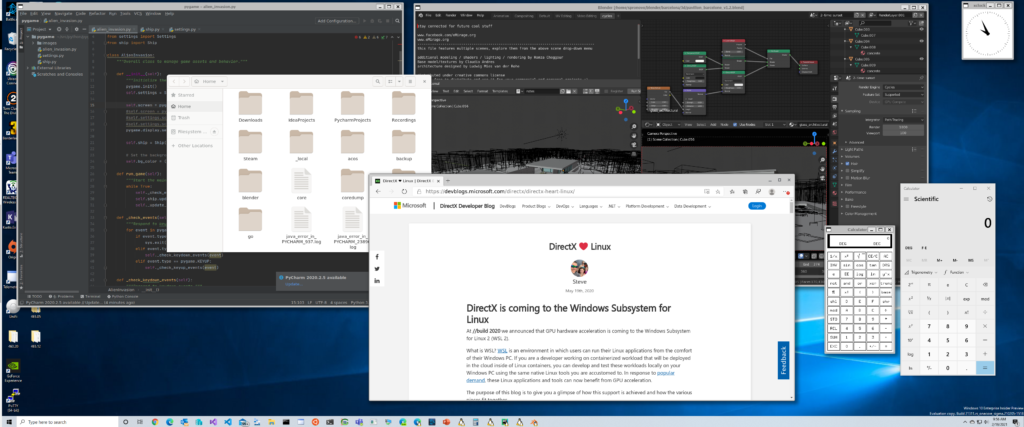Windows Subsystem for Linux GUI
With Windows Subsystem for Linux (WSL or WSL2) you can run Linux applications natively on Windows. The “natively” is to be understood literally for WSL2, meaning you’re really running a Linux Kernel and not just a translation/emulation as with the original WSL. But since I personally haven’t played around much with WSL2, I don’t really want to dig deeper into said topic.
One of the tricky parts is running non-terminal applications, that is Linux GUI applications on Windows, because now you’re not just dealing with system calls, CPU & RAM access, filesystem handling, I/O magic, etc. but you have to somehow deal with graphical things (i.e. your GPU); composing windows, drawing things to the screen, handling inputs, etc.
WSLg is trying to solve exactly this for both Xlib and Wayland applications. It looks and sounds great, but is of course still quite early and experimental. Co-worker posted a screenshot of JetBrains Rider running on WSL2 with WSLg and reported a good performance boost, due to faster filesystem access than natively on Windows.
(Turns out this screenshot from the WSLg repo shows JetBrains PyCharm in the background)

Aptitude vs Apt-Get vs Apt
As I’m using Linux exclusively on servers, I tend to only notice shifts in certain applications when my Google results start to turn up newer information, well actually, I get pretty much all my Linux command usages from Google. Thus it’s no surprise to me, that I never really learned the difference between aptitude and apt-get, I used the first for looking up packages and the later for installing/updating/removing packages.
Aptitude is vaster in functionality than apt-get and integrates functionalities of apt-get and its other variants including apt-mark and apt-cach
TecMint
The most obvious difference is that
Unix StackExchangeaptitudeprovides a terminal menu interface (much like Synaptic in a terminal), whereasapt-getdoes not.
Now in recent months I noticed that some answers on the internet started using apt instead of apt-get and I’ve been slowly adopting it without really knowing the difference.
apt consists some of the most widely used features from apt-get and apt-cache leaving aside obscure and seldom used features. It can also manage apt.conf file.
It’s FOSS
Remove Expired Apt-Key
Just recently one of the signature keys for the popular package provider DEB.SURY.ORG seems to have expired and when updating the packages it would fail to pull the changes. It wasn’t all that complicated to fix and I (re-)learned about apt-key.
sudo apt-key del <key id>
sudo wget -O /etc/apt/trusted.gpg.d/php.gpg https://packages.sury.org/php/apt.gpg
sudo apt-get update